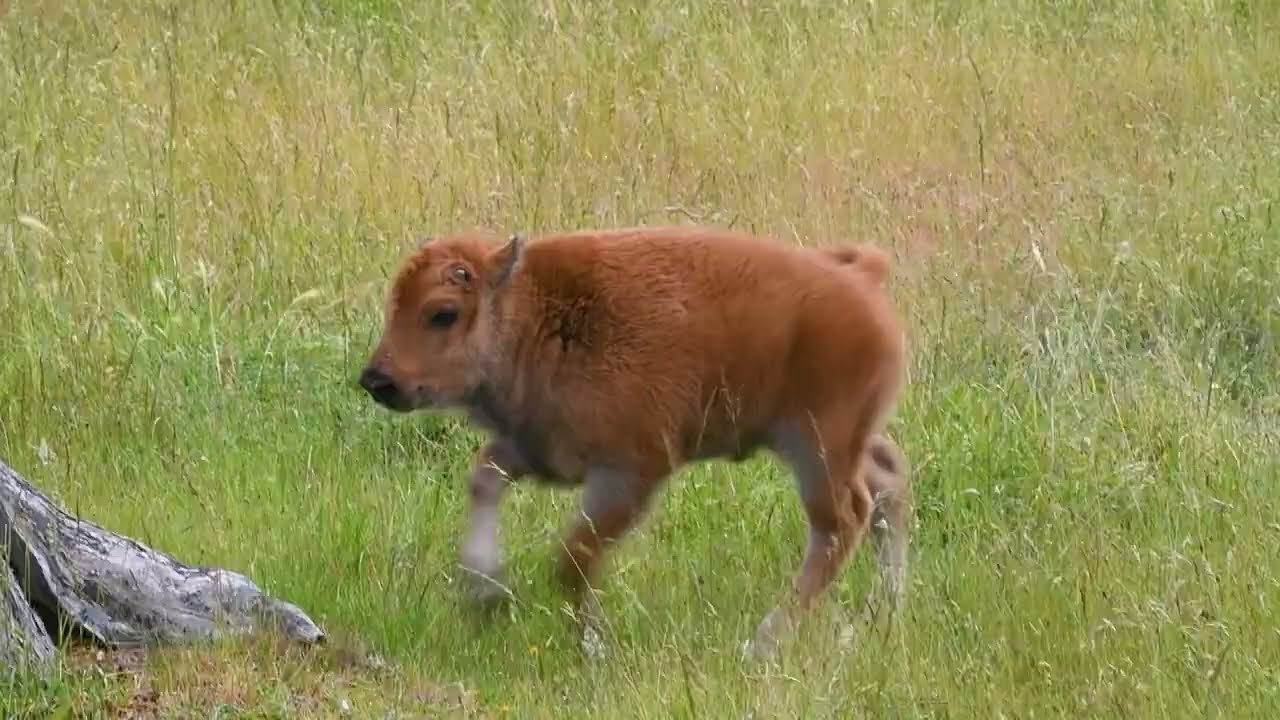- Understanding Baby Bison Zoomies: Behavioral Insights and Significance
- Zoology of Bison: Anatomy, Physiology, and Development
- Role of Zoo Management in Fostering Natural Behavior
- Conservation Efforts and the Importance of Habitat Preservation
- Observational Data: Analyzing Patterns in Baby Bison Behavior
The playful antics of baby bison, often referred to as "zoomies," are not only entertaining but also provide insightful glimpses into the development and well-being of these majestic creatures. The sporadic bursts of energy, characterized by rapid running and playful movements, are essential behaviors in the early stages of bison life.
Understanding Baby Bison Zoomies
Zoomies are a common feature of juvenile mammalian behavior. For baby bison, these playful moments are crucial for physical development. Running and jumping improve their coordination, muscle strength, and overall health. These activities also serve as vital social learning experiences, teaching young bison about herd dynamics and hierarchy.
From a behavioral standpoint, zoomies can reduce stress. It is a method for young bison to release pent-up energy and explore their surroundings. The seemingly chaotic runs help them gain spatial awareness and confidence, essential tools for survival in the wild.
Zoology of Bison
Bison, known scientifically as Bison bison in North America, are large herbivores. Their anatomy is well-suited to grazing and migrating across vast landscapes. Characterized by a robust build, bison calves are born with a lighter color than adults, which darkens as they age.
Physiologically, bison are exceptionally strong, with powerful legs and a muscular hump for plowing through snow and digging for grass. The development of these physical traits begins at a young age and is stimulated by activities like zoomies.
The digestive system of bison, with its four-chambered stomach, is designed to extract nutrients efficiently from fibrous plant materials. Calves begin grazing within weeks of birth, though they rely on mother’s milk for vital antibodies and nutrients.
Role of Zoo Management
Zoo environments play a crucial role in simulating natural habitats and promoting natural behaviors such as zoomies. Enclosures need to be spacious and enriched to encourage physical activity. Obstacles, simulated terrains, and herd social structures replicate wild conditions, stimulating natural developmental behaviors.
Staff within zoo management must carefully monitor the health and behavior of bison calves. Observational data collected assists in determining if animals meet developmental milestones. These practices not only cater to the individual animal’s needs but also contribute to broader conservation and educational goals.
Conservation Efforts
Bison have faced numerous challenges over the centuries, primarily due to hunting and habitat reduction. Conservation efforts focus on habitat restoration and protection, along with breeding programs that maintain genetic diversity.
The playful nature of baby bison underscores the vitality of these conservation efforts. Healthy, active populations indicate the success of these programs. Education provided by zoos plays a critical role in raising awareness about habitat preservation and the ecological importance of bison.
Reintroducing bison to native grasslands is a key tactic in conservation strategies. These efforts not only benefit local ecosystems by improving grassland health but also create viable futures for bison populations.
Observational Data
Analyzing patterns in baby bison behavior provides essential insight into their health and development. Observers document frequency, duration, and context of zoomies. These data inform decisions on habitat design and enrichment practices.
Patterns emerge, showing that zoomies often occur in the morning or late afternoon, correlating with cooler temperatures and increased energy levels. Understanding these patterns aids zoo managers in creating schedules for feeding, health checks, and interactive sessions with zoo visitors.
In conclusion, the seemingly playful antics of baby bison during their zoomies hold significant insight into their development, behavioral health, and the success of conservation efforts. By promoting and studying these behaviors, zoologists and zoo management can enhance bison well-being and foster a deeper understanding and appreciation for these iconic animals within the context of wildlife conservation. The focus remains on ensuring their habitats—both in the wild and in captivity—support their natural behaviors and promote thriving populations.
*****
Source Description
Baby bison zoomies alert! 💨 Meet Samson, the newest (and speediest) member of our Free-Roaming Area herd. Born over Memorial Day Weekend, this fluffy little calf has already mastered the art of sprinting joyfully across 435 acres of forested fields like he owns the place. Catch a glimpse of Samson on a Wild Drive, Keeper Adventure, or Tram Tour, if you can keep up! 🦬


